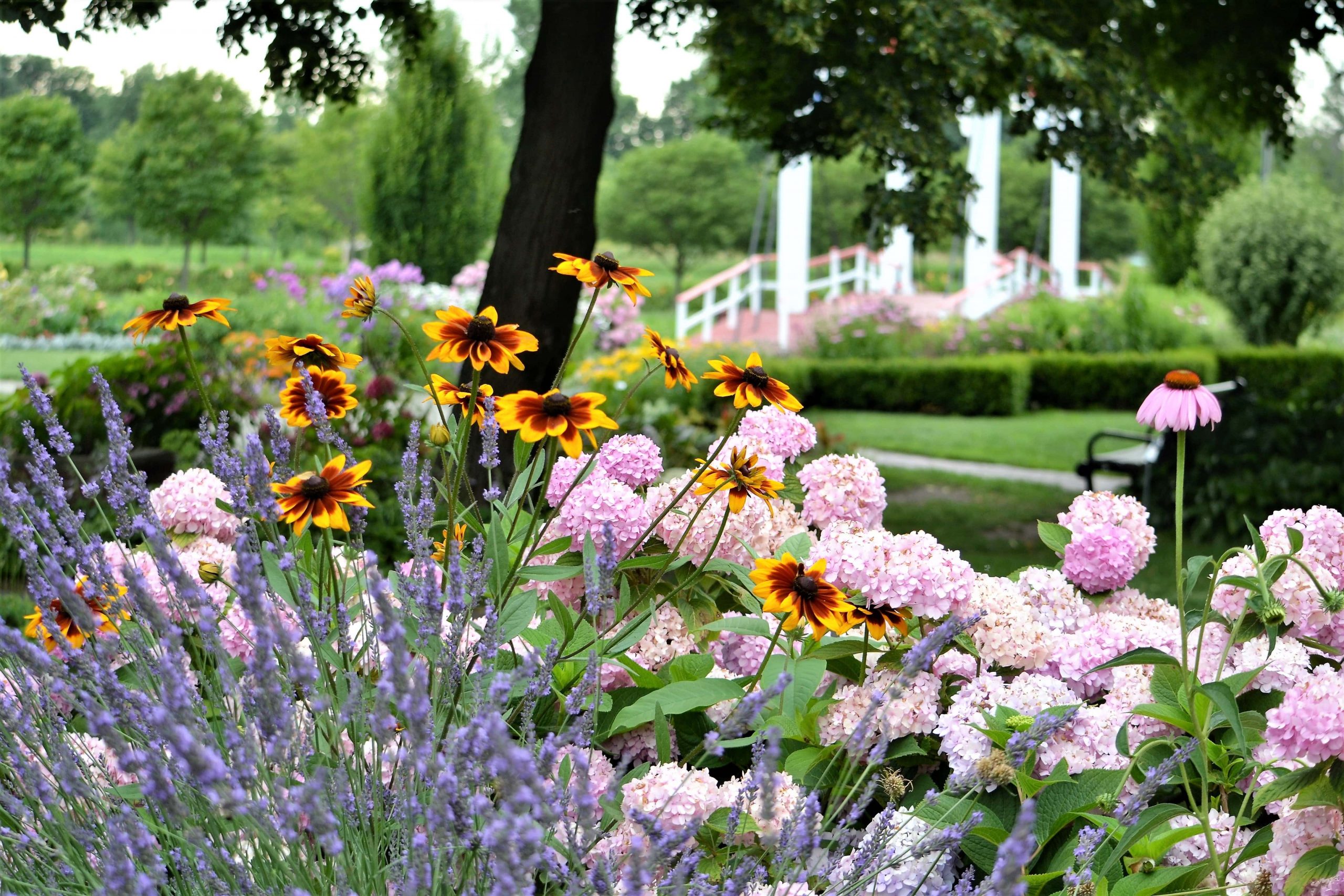Grow flowers for fun and as an art project. They can bring life and color to any open space. Not only does seeing flowers grow from tiny seeds to full bloom make a yard look better, but it also makes you feel good and calms you down, which is good for your health. Anyone who reads this will learn the basics of flower growing, whether they have done it before or not. Know your growing zones, pick plants that are easy to grow, and put them in the right way to make sure your garden grows well. This book is meant to give farmers the tools they need to grow a successful flower garden that they can enjoy all year. It does this by giving them helpful tips and creative ideas.
Selecting the Right Flowers for Your Garden
When picking flowers for your yard, you should think about the weather, the type of dirt, and how much care you want to give them. Figuring out the temperature zone will help you choose flowers that will do well in your area. For instance, lavender and salvia do well in hot, dry places, while ferns and hostas do better in cooler, shadier places. In the same way, the type of soil is very important. For example, plants that need well-drained soil, like lavender, do best in sandy soils, while plants that like wet soil, like irises, might do better in clay-heavy soils. Checking these things out will make sure that the flowers grow well with little help from you.
A mix of perennials and annuals is a good way to make sure that your garden blooms all year long. Some plants, like roses and daylilies, come back every year and are a solid base for any garden. They usually bloom for a few weeks at a time, which adds to the beauty of the yard and reduces the need to replant. Annuals, on the other hand, like marigolds and petunias, fill in the spaces around plants and add bright color. They grow quickly and bloom for a long time, which makes them great for adding yearly variety and making the garden look better for longer.
If you want to grow with less work, it’s best to pick flowers that are known for being hardy and pest-proof. Native plants, in particular, have gotten used to the conditions where they grow and usually need less care. They usually need less water once they’re established and are better able to handle pests and diseases in the area. If you plan your yard well and think about these things, you can get a nice mix of color and bloom all through the year, which is nice to look at and good for the environment.
Essential Soil Preparation and Planting Tips
A healthy dirt is essential for flower growing because it gives plants the support they need to grow. It gives plants the nutrients they need, keeps water in, and helps roots grow. It is very important to have good drainage so that water doesn’t build up and cause root rot and other diseases. It is highly recommended to add organic matter like compost to the soil to make it drain better and be healthier generally. Organic matter adds nutrition to the soil, makes it stronger, and encourages good microbes to work in it. All of these things help plants grow well.
When you plant something, following a few rules can help it grow the best it can. In general, the planting depth should be twice the width of the seed or bulb, but the needs of each plant should be taken into account. It’s also important to leave enough space between plants to avoid crowding, which can make it hard for plants to get water and nutrients and make it harder for air to flow, which can raise the risk of disease. Use the plants’ full size as a guide to decide how far apart to put them. This will make sure they have enough room to grow without being squished.
How you water your flowers is a big part of keeping them healthy. When you water plants rarely but deeply, the roots grow deeper into the dirt, making the plants more resistant to drought. The best time to water is early in the morning, when the leaves have time to dry out before dark, which lowers the risk of fungal diseases. Change how often you water based on the weather and the amount of water in the soil. Make sure the soil stays moist but not too wet. Gardeners can make a place where flowers can grow by paying attention to these things about growing, watering, and the health of the dirt.
Caring for Flowers Throughout the Seasons
To keep a flower healthy, it needs to be watered regularly, fertilized properly, and pruned at the right time. It is very important to water your plants regularly. A drip irrigation system can make sure that each plant gets the water it needs without flooding the soil. It’s important to water plants differently depending on the weather, giving them more water when it’s dry and less water when it rains. During the growth season, you should use a balanced, slow-release fertilizer to give your plants the nutrients they need. This encourages strong growth and bright flowers. Not only does pruning dead flowers and leaves keep the yard looking nice, but it also encourages new growth and keeps diseases away.
Pests like aphids, slugs, and spider mites often like to hang out in gardens and can hurt plants if they are not treated. Checking plants often for signs of pest activity can help you catch outbreaks early. Natural treatments, such as neem oil or insecticidal soap, can get rid of pests without hurting good bugs. Additionally, adding natural pests like ladybugs can help keep the garden’s environment in order.
A flower garden can also be hurt by changes in the seasons. Using mulch to keep the soil wet and control the temperature can protect flowers from bad weather. During the winter, frost cloths can protect delicate plants from damage caused by freezing temperatures. On the other hand, using outdoor cloth to block the sun can protect delicate flowers from the heat of the summer. Gardeners can plan for and react to seasonal changes by doing regular maintenance on their gardens and keeping an eye on weather reports. This way, their flowers stay healthy and beautiful all year.
Conclusion
To make a flower garden that grows well, you should first choose the right spot and find out how much sunshine it gets. This will help you choose the right plants. Knowing your planting zone can help you choose flowers that will do well in your area. Once a spot has been chosen, it’s important to get rid of any weeds and make sure there is a water source nearby. Adding nutrition to the soil through tests and additions helps plants grow in a healthy way. Picking plants that bees, butterflies, and other pollinators like can help your garden grow more flowers and stay healthy. Plants stay healthy and bright with regular care, like cutting off dead flowers and keeping pests away. If you take the right steps, like picking flowers in the morning and preparing them right away, anyone can have a bright, thriving garden, even if they only have room for a few pots or beds.



